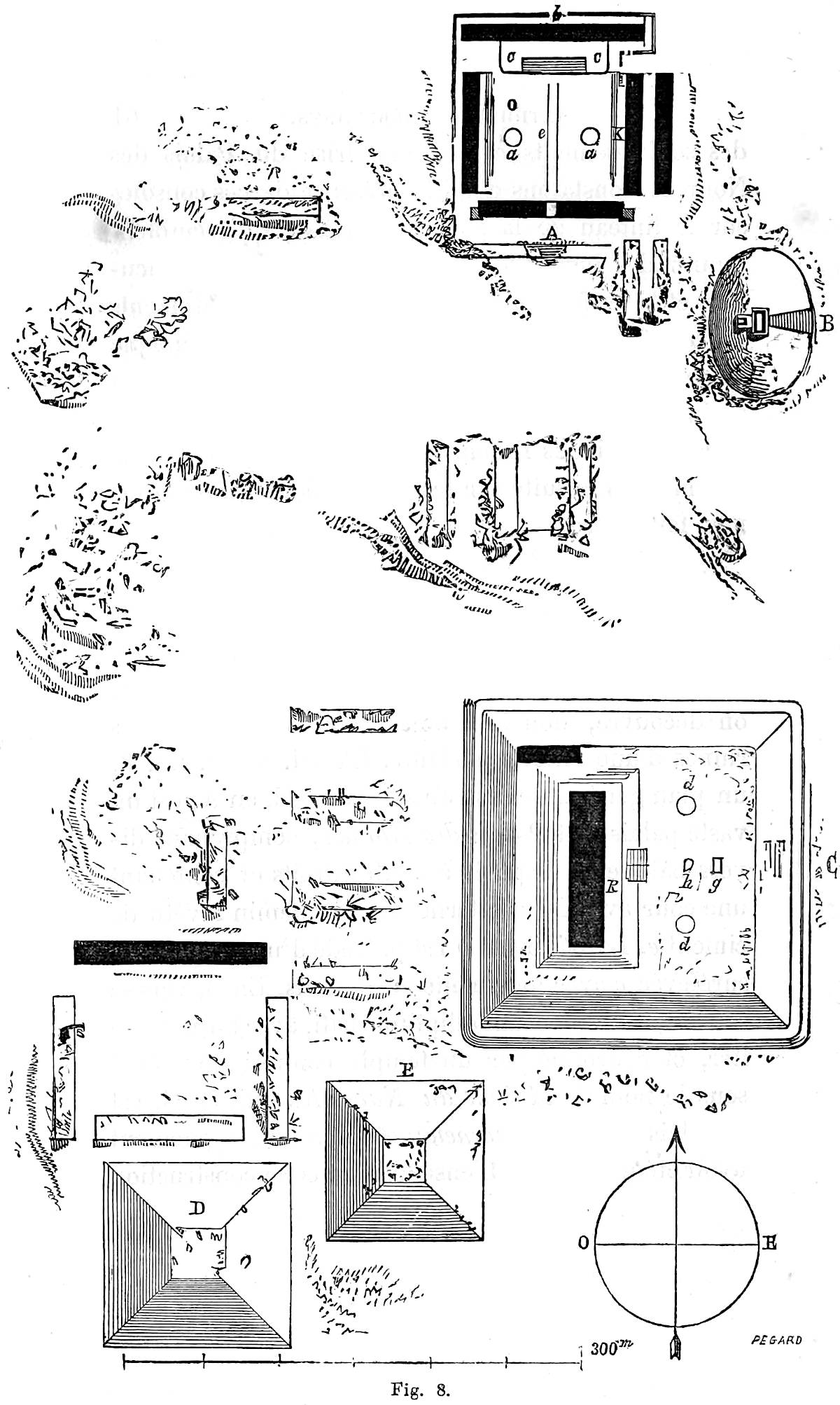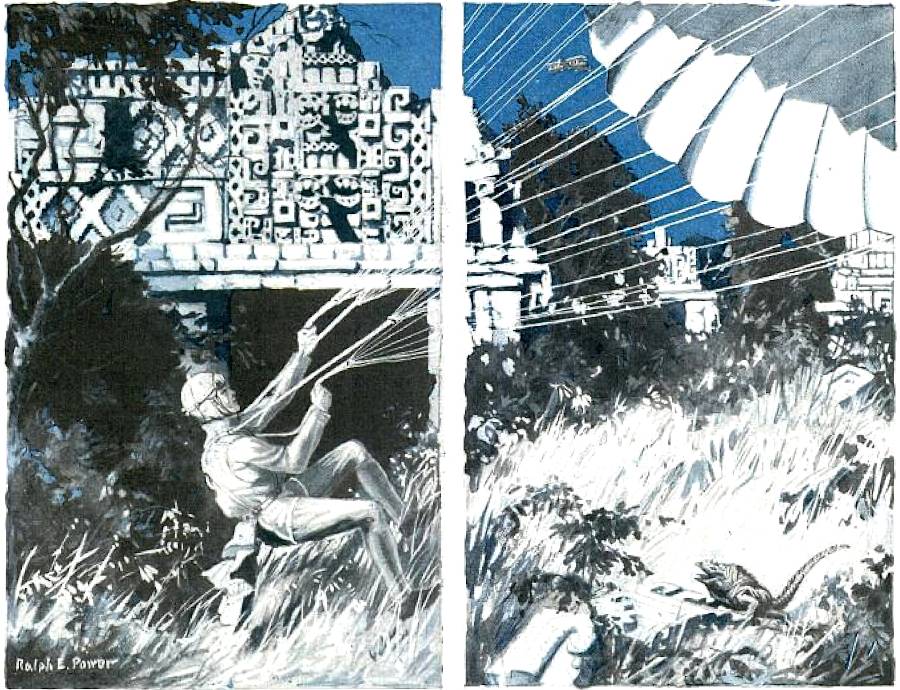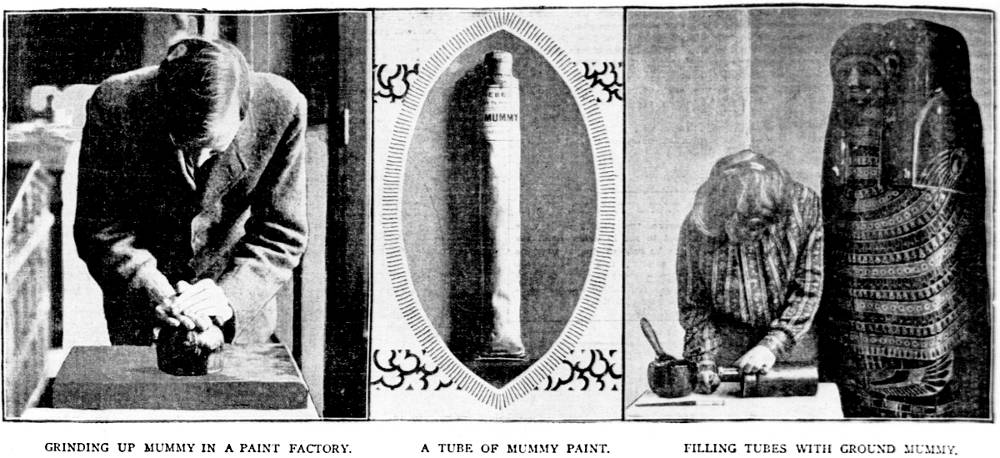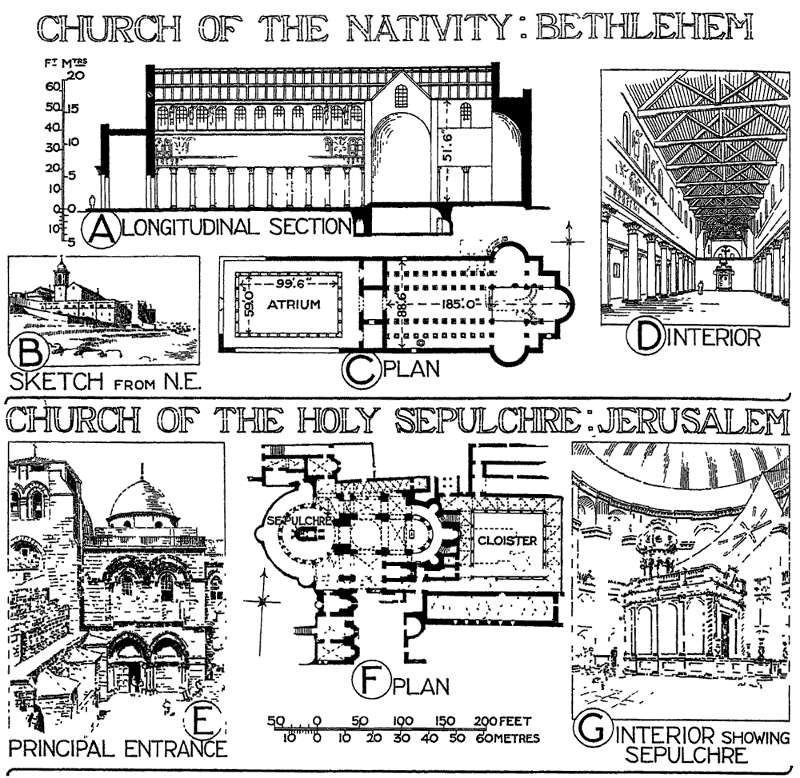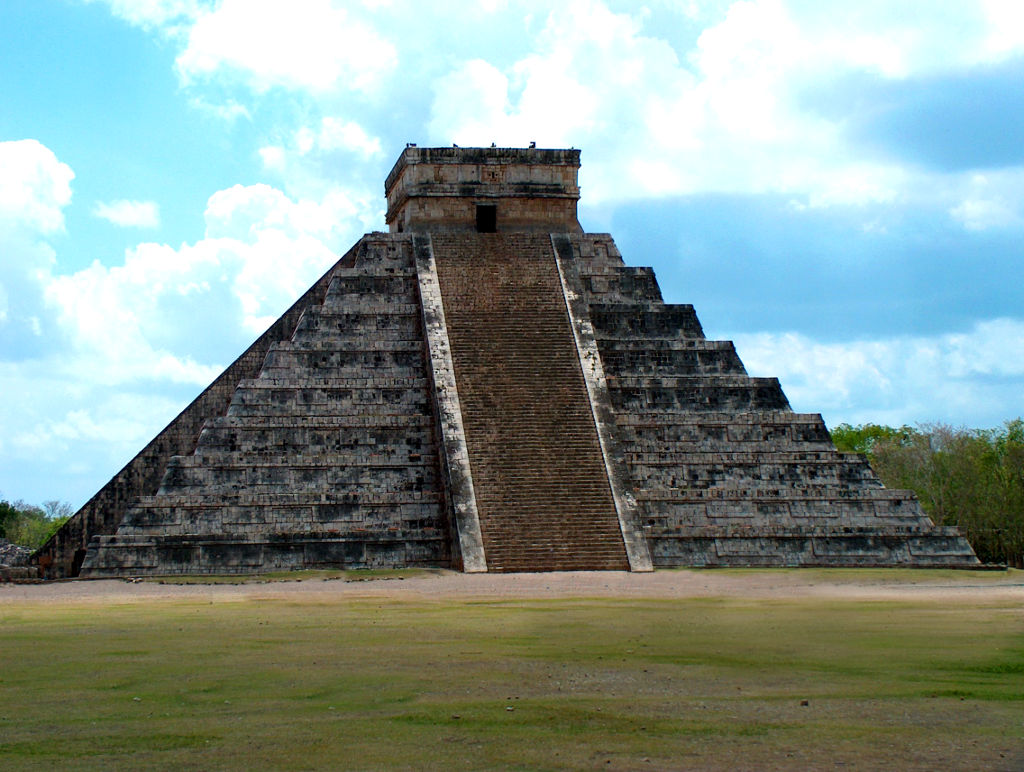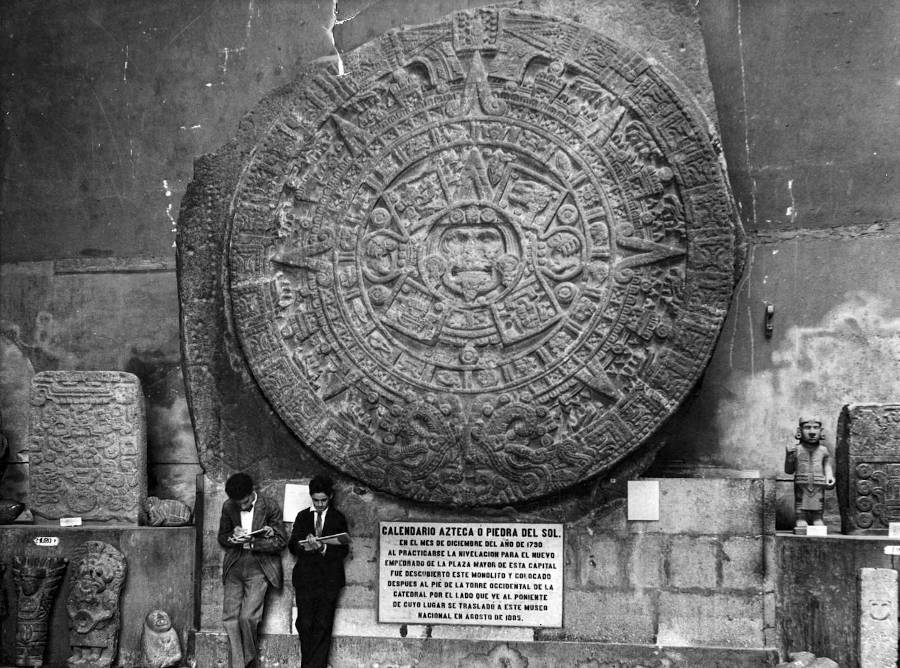 The Aztec sun stone at the Museo Nacional de Antropología in Mexico City
The Aztec sun stone at the Museo Nacional de Antropología in Mexico City
photographed in c. 1930. Photo: Ewing Galloway/General Photographic Agency/Getty Images
Category: Archeology
Exploring the past and learning about lost civilizations is a common pulp trope.
Mayan Temple Grounds
Jumping into the Mayan Jungles
Temple of Hittites Discovered, 1930
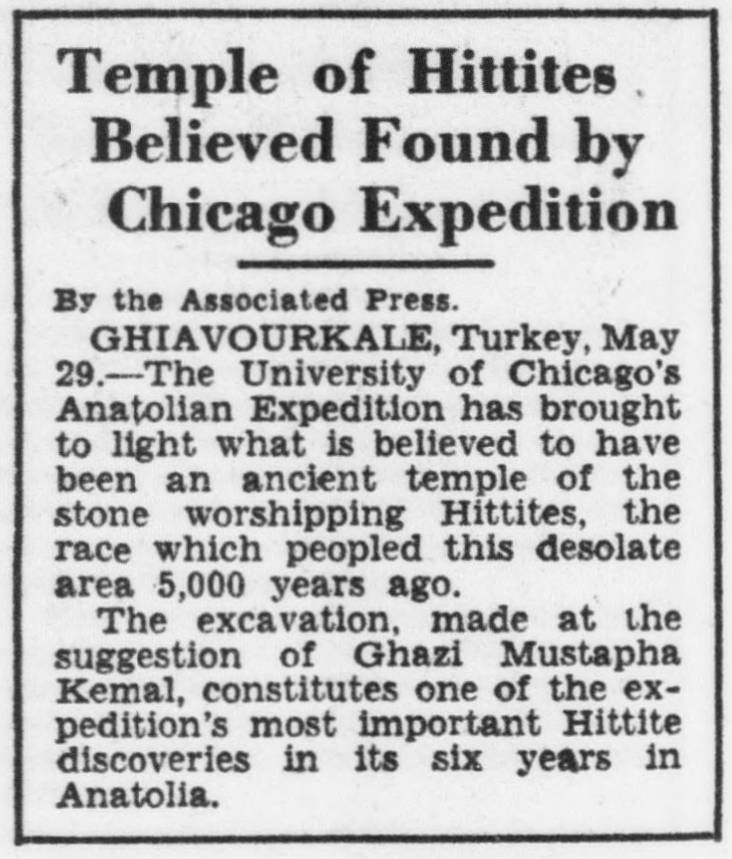 From the Evening Star, Washington DC, May 29, 1930
From the Evening Star, Washington DC, May 29, 1930
Ancient Temple of Hittites Is Found in Turkey KHIAVOURKALE, Turkey, May 29.–The University of Chicago Anatolian expedition has brought to Iight what is believed to have been an ancient temple of the stone worshiping Hittites, the race which peopled this desolate area 5,000 years ago. The excavation, made at the suggestion of Ghazi Mustapha Kemal, constitutes one of the expedition’s most important Hittlte discoveries in its six years in Anatolia. The Ghazi asked the expedition to try Ghiavourkale before beginning its regular work at Aleshar on June 1. Hence the Chicagoans went to Ghiavourkale May 23 and drew a test line east and west. By luck they bared a Cyclopean wall and path leading to what probably is a temple, as enormous reliefs of a Hittite king, priest and goddess were engraved on the exterior rock face.
Mummy Paint, 1903
From New-York Tribune, December 20, 1903
MUMMIES GROUND UP FOR PAINT FOR PICTURES.
Afford Beautiful Tint for Brown Hair with Glint of Gold – Industry Threatened with Extinction from Lack of Material.
Mummy – powdered mummy – makes one of the best and most popular colors used by artists. Every large dealer in oil paints sells powdered mummy, and almost every manufacturer of pigments has a mummy department, where, in a spice laden atmosphere, amid surroundings picturesque and grewsome, young men and women grind up the dried bodies of Egyptian princesses and priests, mix the powder with poppy oil and bottle it for the market in little tubes of tin. Continue reading “Mummy Paint, 1903”
Churches in Bethlehem and Jerusalem
El Castillo, Yucatan, 2005
Some photos I took back in 2005 on a visit to Chitzen Itza, Yucatan. The following year, tourists we not allowed to climb the structure.
Colossal Head at Izamal, 1844
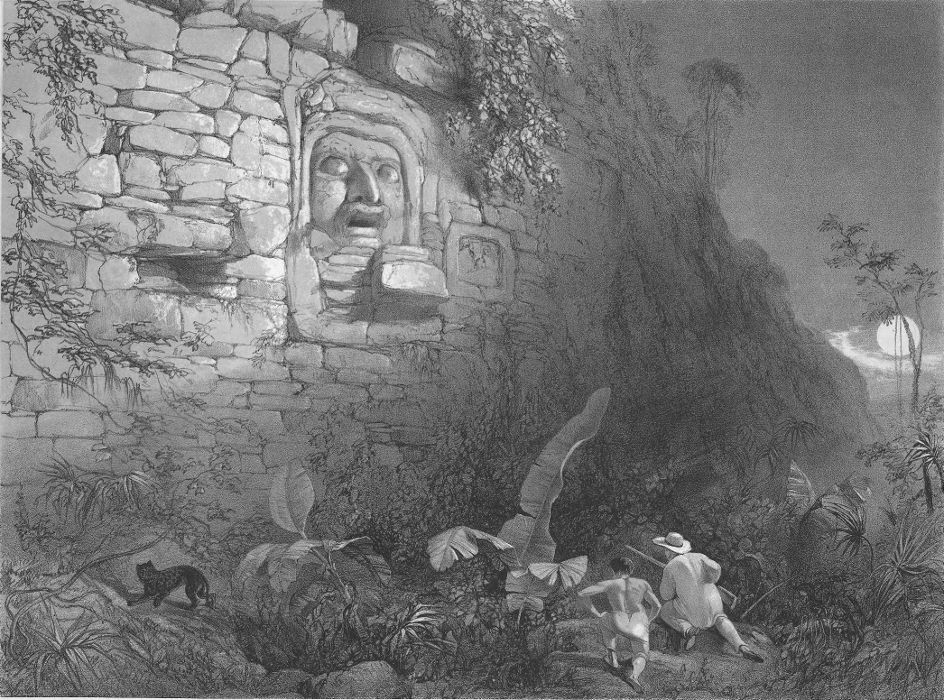 From Views of ancient monuments in Central America, Chiapas and Yucatan
From Views of ancient monuments in Central America, Chiapas and Yucatan
COLOSSAL HEAD, AT IZAMAL.
ON STONE, BY H. WARREN.
Izamal, at the height of its prosperity, must have been one of the most important of the Indian cities of Yucatan. There is abundant testimony to prove that it was inhabited at the time of the Spanish conquest. There are still remaining several mounds, one of which is the largest in Yucatan, but so dilapidated and disfigured, as to defy accurate measurement : it may be about seven hundred feet long and sixty high. It is said to contain interior chambers and colossal statues ; but no entrance at present exists to these subterranean apartments. The great church and convent of the Franciscan monks stands on the upper platform of one of these ancient teocalli, and the open area fronting the church is probably not less than two hundred feet square, surrounded on three sides by an open colonnade, forming a noble promenade, overlooking the modern city of Izamal and the surrounding country to a great distance. On the side of a mound about two hundred feet long, and which formerly had stone and stucco ornaments from one end to the other, is the Colossal Head — perhaps of some deity — represented in the plate : it is seven feet eight inches in height, and seven feet in width. A stone, one foot six inches long, protrudes from the chin, intended perhaps for burning copal on.
Castle at Tuloom, 1844
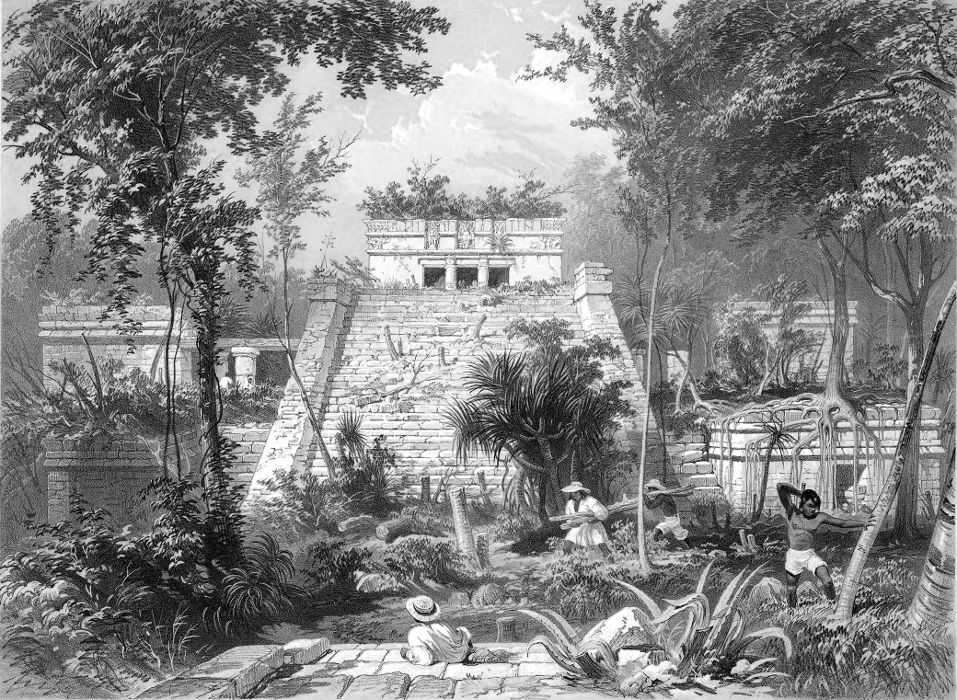 From Views of ancient monuments in Central America, Chiapas and Yucatan, 1844
From Views of ancient monuments in Central America, Chiapas and Yucatan, 1844
CASTLE, AT TULOOM.
ON STONE, BY A. PICKEN.
The ruined City of Tuloom is situated on a ledge of rocks on the eastern shore of Yucatan. The building given in Plate XXIII., although called a Castillo, or Castle, was, there can be little doubt, a place used for the religious ceremonies of the Indians. At the time the drawing was made, trees obstructed the view, which had to be cut down before the design of the edifice could be made out. Continue reading “Castle at Tuloom, 1844”
Teocallis At Chichen Itza, 1844
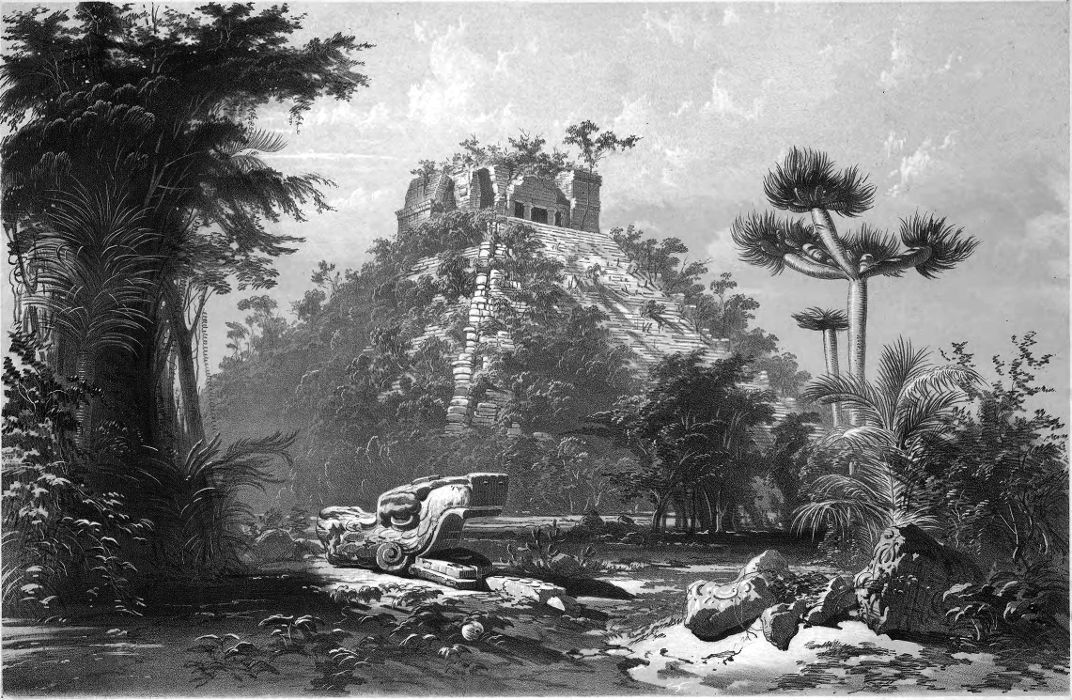 From Views of ancient monuments in Central America, Chiapas and Yucatan, 1844
From Views of ancient monuments in Central America, Chiapas and Yucatan, 1844
TEOCALLIS, AT CHICHEN-ITZA.
ON STONE, BY A. PICKEN.
The ruins of Chichen-Itza are nine leagues from Valladolid. — (See map.) They he on a Hacienda, called by the name of the ancient city.
The Camino Real to Valladolid passes through the field of ruins. The great buildings tower on both sides of the road in full sight of all passers-by ; and from the fact that this road is much travelled, the ruins of Chichen are perhaps more generally known to the people of the country than any others in Yucatan. The Plate represents the Castillo, or Castle, the first building seen on approaching the ruins, and, from every point of view, the grandest and most conspicuous object that towers above the plain. The mound measures at the base, on the north and south sides, one hundred and ninety-six feet ten inches ; and on the east and west sides, two hundred and two feet. It does not face the cardinal points exactly, though probably so intended; and in all the buildings, from some cause not easily accounted for, while one varies ten degrees one way, that immediately adjoining varies twelve or thirteen degrees the other. It is built up, apparently solid, from the plain to the height of seventy-five feet. On the west side is a staircase, thirty-seven feet wide ; on the north, being that presented in the engraving, the staircase is forty-four feet wide, and has ninety steps. Continue reading “Teocallis At Chichen Itza, 1844”
